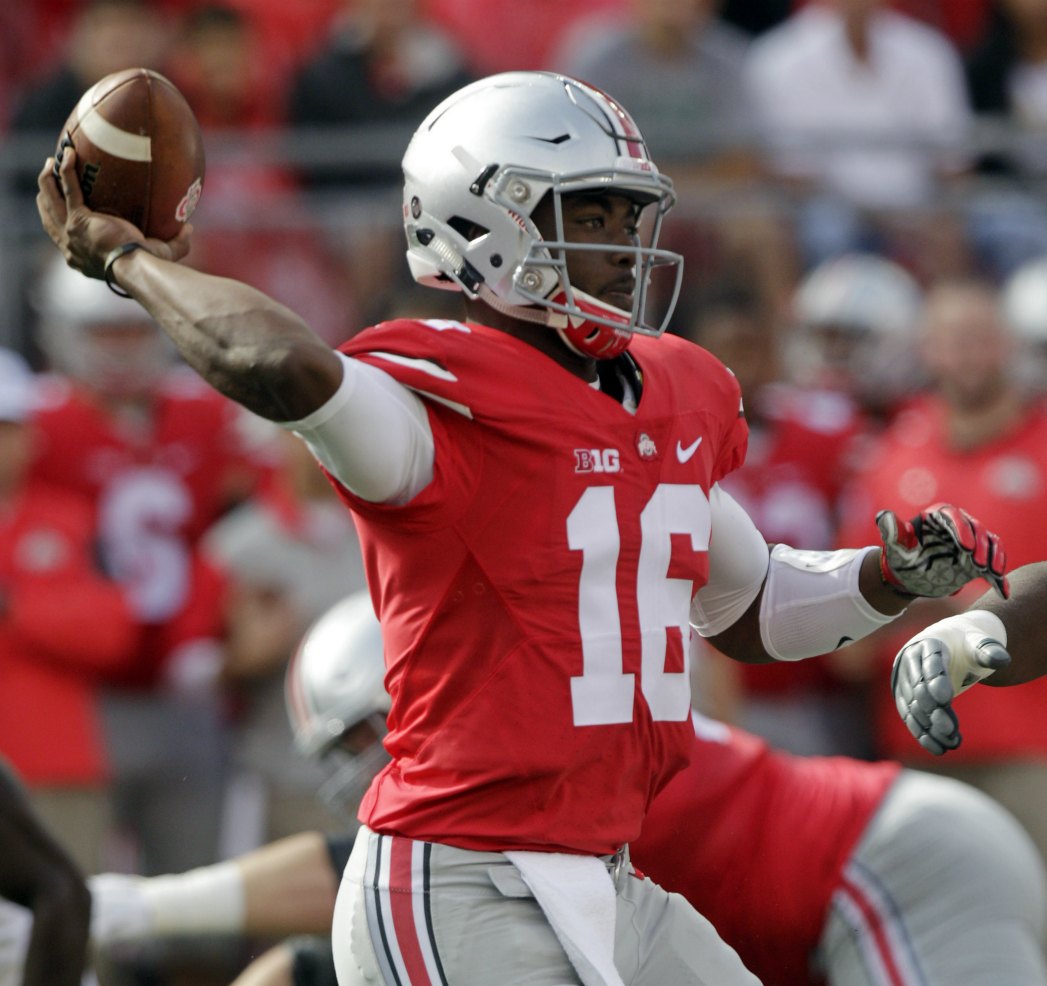It might be time for Urban Meyer to settle on a starting quarterback — at least, that is according to what the Ohio State head coach said himself following the Buckeyes’ narrow 20-13 win over Northern Illinois Saturday.
After Braxton Miller moved to wide receiver in the offseason, the quarterback competition in Columbus was down to Cardale Jones and J.T. Barrett — two dangerous dual-threat quarterbacks who stood out in our grading system for their rushing production, but who showed they had room to grow as passers. We've discussed their individual merits before, as well as the concept of using both.
Jones has the more accurate deep ball and gives the Buckeyes a more explosive downfield passing attack. In 2014, 26.1 percent of Jones' passes traveled 20 yards or more downfield in the air. He’s effective as a runner as well, using his size to plough through defenses.
Barrett was a little more accurate overall than Jones, and makes quicker decisions, taking 15.5 percent less time to get rid of the ball. With Barrett under center, the Buckeyes have a better short-to-intermediate passing game, getting the ball into the hands of their skill players quicker, and putting an emphasis on gaining yards after the catch. Barrett is also a smoother and more elusive runner than Jones, and graded out much better in that area on a per-game basis last season.
Meyer went with Jones as the starter for 2015, but Barrett has seen the field in all three games, with neither excelling. Jones saw the lion's share of the snaps through the first two weeks, with a -4.1 overall grade on 120 snaps, compared to Barrett's 0.2 grade from 29 snaps. That low snap count makes it difficult to assess Barrett's performances thus far, but Jones certainly hasn't matched last year's form. The game against Northern Illinois will not have helped his stats, but even through the first two weeks his 69.4 accuracy percentage was down from the 71.4 mark he set in 2015. He has averaged 13.1 yards per deep pass attempt, which compares unfavorably to 19.2 in 2014, though the departure of deep-threat WR Devin Smith contributes to that.
Against Northern Illinois Jones completed 4-of-9 passes for 36 yards and two picks before he was benched in favor of Barrett. Barrett completed 11-of-19 for 97 yards and a touchdown, which was better but still not great. He also threw a pick of his own and was lucky not to have another. Once again, neither excelled.
Until now it hasn't mattered how the quarterbacks have played, as the Buckeyes' terrific defense has been capable of carrying them. But something has to change if the offense is to gel, and perhaps sticking with one quarterback is the solution.
Heading into the season, choosing Jones made sense on the basis of the idea that his downfield passing ability added a dimension to the offense that Barrett could not provide, especially since both graded similarly and were effective runners. But with that element largely absent through the Buckeyes’ first three games under Jones, turning back to Barrett, who offers more consistency and accuracy as a passer, along with better running ability, seems to make sense at the moment.


 © 2024 PFF - all rights reserved.
© 2024 PFF - all rights reserved.